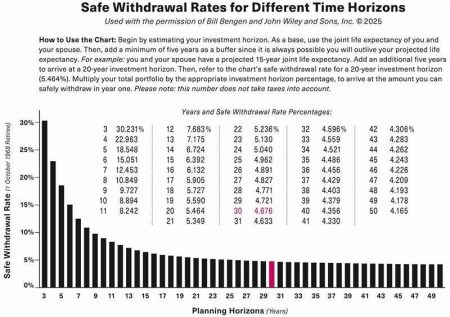Risk plays a critical role in successful retirement planning. Generally, a higher level of risk is associated with the potential for higher returns, while a lower level of risk offers a more conservative, stable path toward retirement. This basic trade-off is relatively easy to grasp in normal market conditions. However, during periods of market volatility, the ability to maintain discipline becomes crucial. At the core of a sound retirement strategy is aligning both risk tolerance and investment time horizon.
Many investors make the mistake of letting short-term market fluctuations dictate long-term decisions. During volatile periods, especially market corrections or bear markets, the impulse to reduce exposure to risk can be overwhelming. For example, shifting to an overly conservative investment strategy in the midst of a downturn may seem like a way to avoid further losses, but this reaction may lead to missed opportunities during a market recovery and hinder long-term growth.
Looking at historical data helps illustrate this point. When examining the S&P 500, one of the most widely followed equity benchmarks, the ten best single-day returns occurred during times of market distress. Specifically, nine out of the ten highest one-day gains happened during bear markets, while the remaining one occurred during a market correction. A correction is typically defined as a decline of 10% or more from a recent peak, while a bear market goes beyond a market correction and represents a drop of 20% or more. These periods are unfortunately when many investors panic and reduce their market exposure, often just before or during some of the strongest market rebounds.
This highlights the dangers of trying to time the market. While moving into more conservative investments during turbulent times may feel prudent, it often results in locking in losses and missing out on recoveries. Long-term investing success is generally tied to consistency and staying invested through all phases of the market cycle.
That said, making adjustments to asset allocation isn’t always unwise. Changes should ideally be prompted by personal life events rather than short-term market behavior or media headlines. Significant milestones such as a career change, nearing retirement, marriage, the birth of a child, divorce, or receiving an inheritance are valid reasons to reassess risk tolerance and investment strategy.
While risk is an unavoidable aspect of retirement planning, how investors respond to it during volatile markets can make a significant difference in long-term outcomes. Maintaining a disciplined approach, staying aligned with one’s risk tolerance and time horizon, and resisting the urge to make emotionally driven decisions are key to weathering market fluctuations. History shows that some of the strongest market gains occur during downturns, underscoring the importance of staying invested. Adjustments to asset allocation should be thoughtful and driven by personal circumstances rather than short-term market noise. By focusing on long-term goals and making informed, strategic decisions, investors can build a more resilient and successful retirement plan.
Read the full article here









